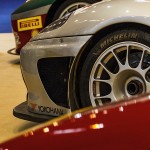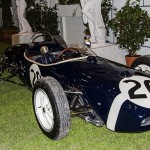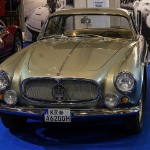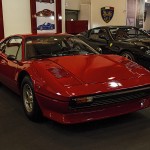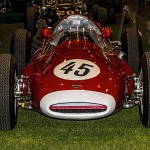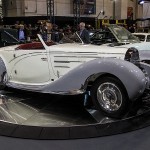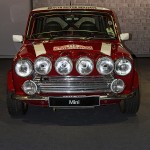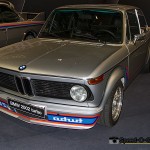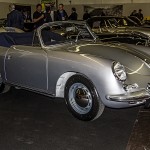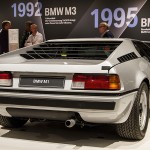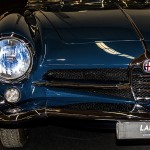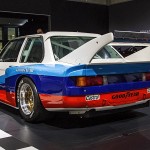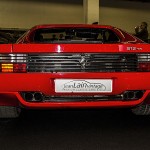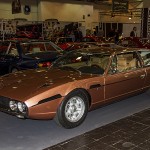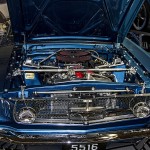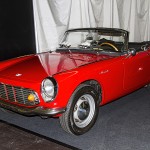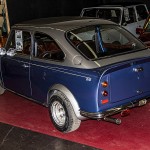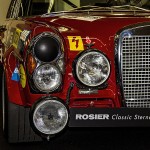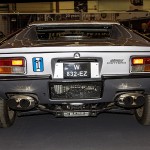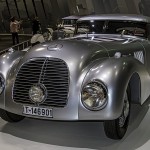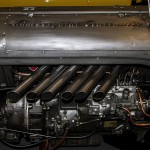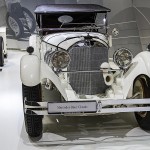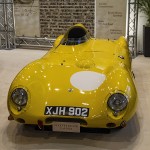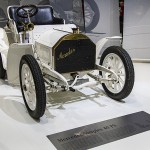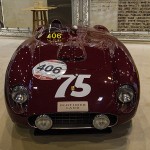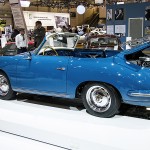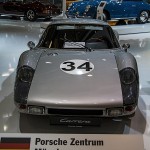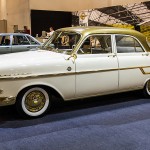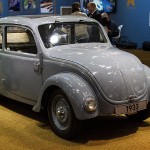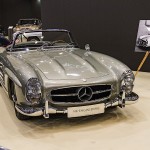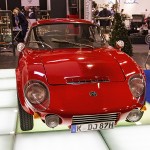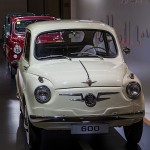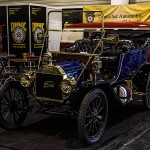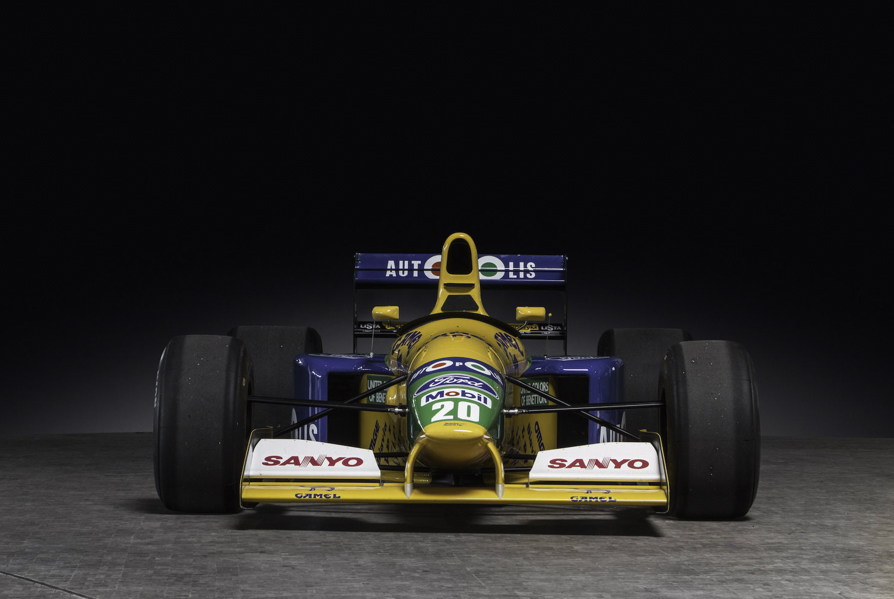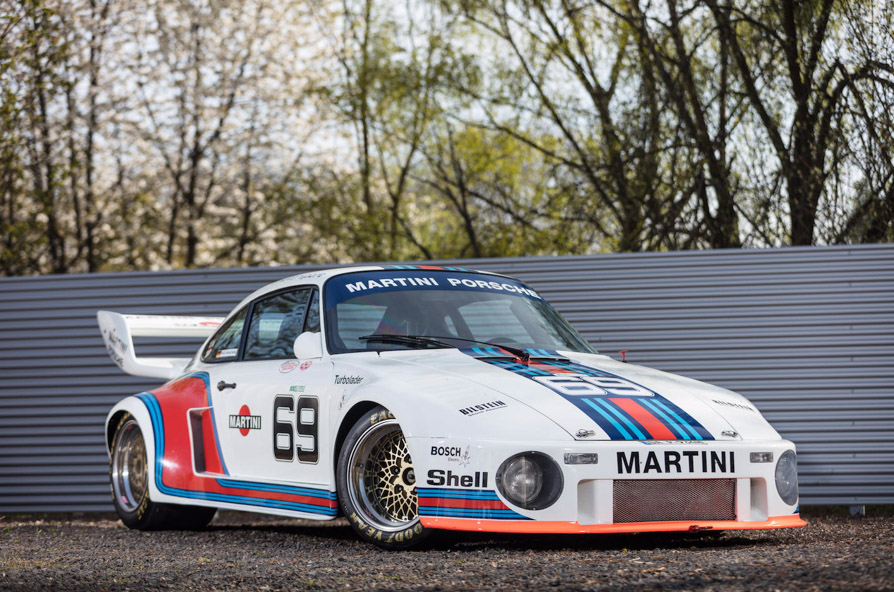![]()
by Marcel Hundscheid / Speed-O-Graphica.com
We return to our look back at the golden era of Formula 2 with this piece investigating the many constructors that fought for glory in the formula’s championships.
Over the years cars from about 20 different manufacturers contested the European F2 championship, including Brabham, Cooper, Ferrari, Lotus, Tecno and Surtees.
March had its own workshop and produced up to 20 chassis annually for customers. They were followed by Chevron, Lola and Ralt, but cars produced by them dominated the grids of the European championship until 1984. In addition there were several small manufacturers who produced chassis such as AGS, Martini, Maurer, Merzario, Minardi and Osella. Let’s take a closer look at the different manufacturers that raced in the European F2 Championship.
![]()
AGS
Heny Julien founded Automobiles Gonfaronnaises Sportives back in 1969. Julien was a French mechanic who created his first car that same year for Formule France, a precursor of Formula Renault. In 1978 AGS started to compete in the European F2 Championship with their AGS JH15 powered by a BMW-engine, although they didn’t manage to score any championship points.
Richard Dallest didn’t score championship points in 1978 and 1979, but in 1980 the French driver scored victories in both Pau and Zandvoort. In 1982 Philippe Streiff and Pascal Fabre scored podium finishes in an AGS JH19. Streiff made history by winning the very last round of the European F2 Championship in 1984.
Brabham
Jack Brabham and Ron Tauranac founded Brabham in 1960, but had actually begun producing their own single seaters around five years earlier. In 1964 the BT10 was used as their first Formula 2 car. This car was followed by the BT16 in 1965 and the BT18 in 1966.
Jack Brabham and Denny Hulme scored 11 consecutive victories with a BT18 in the Formula 2 Championship. The Brabham BT23 and BT23C followed in 1967 and 1968.
In 1969 the BT30 appeared, without a doubt the most successful car that Brabham constructed for Formula 2. Remarkably Brabham never used the BT30 for its works Formula 2 team. In this BT30s were always driven on behalf of private teams. The BT30 was followed by the BT36 in 1971 and BT38 in 1972. Brabham’s final F2-model was the BT40 from 1973.
![Formula 2]()
Chevron
Derek Bennett founded Chevron Cars Ltd. in 1965 and was particularly noted for a wide range of single seater racing cars that ran in Formula 2, Formula 3 and Formula 5000.
The constructor produced eleven different cars were for Formula 2, starting with the B10 in 1968. Chevron used the B17 and B18 from 1970 in both F2 and Formula Atlantic. The B20 from 1972 was primarily intended for F2, but was also used in F3 and Formula B. In 1973 the Chevron B73 appeared for use in both F2 Formula Atlantic followed by the B27 in 1974. A commercially successful single seater was the Chevron B29 from 1975, with at least 27 sold cars. In 1976 the Chevron B35 appeared, the F2 version of the B34. Finally the B40 (1977), B42 (1978) and B48 from 1979 were used in F2.
![Formula 2]()
Cooper
Charles Cooper and his son John founded the Cooper Car Company in 1947 and started building race cars shortly after the end of the second World War.
Cooper introduced the Formula Two Cooper Bristol in 1952, equipped with an engine that was in front of the driver. From 1955 Cooper started to build rear-engined sports cars like the Cooper Bobtail.
As they saw the benefit of positioning the center of gravity closer to the middle of the car, it was decided to build a single seater for use in Formula 2 races. Cooper’s F2 cars equipped with a rear mounted engine were the T41 from 1956, T43 from 1957, the 1958 Cooper T45 and T51 from 1959.
![Formula 2]()
Ferrari
In 1948 Ferrari introduced the Model 166 F2. It was driven by Raymond Sommer, who scored victory at the Grand Prix in Florence.
Aurelio Lampredi designed the Ferrari 500 F2 from 1951, the car which Alberto Ascari used to win his very first world championship. The Ferrari 553 was used from 1953 in Formula 2 and from 1954 in Formula 1, followed by the Ferrari Dino 156 F2 in 1957. In 1960 Ferrari introduced the 156 F2 followed by the Dino 166 F2 in 1967.
![Formula 2]()
Lola
Although Lola focused primarily on sports cars, the brand also developed Formula 2 cars resulting in the official works team for BMW.
Lola’s first F2 design became one of their most successful in the class – the T54 from 1964. The T55 appeared later that same year and was followed by the monocoque T60 in 1965. Lola offered the T61 in the following year, although it saw very little success. Motorsports racing legend John Surtees debuted Lola’s new T62 at the end of the ’66 season, achieving significantly better results.
BMW commissioned a chassis in 1967 which was to be powered by a BMW-engine. The car became known as the Lola T100. These cars were largely unsuccessful until John Surtees bought two for his own team. Surtees equipped one car with a BMW engine, whilst the other car used a Cosworth FVA engine. This combination turned out to be successful. Lola developed the T102 for BMW in 1968.
After a three year sabbatical Lola returned to Formula 2 in 1971 with the T240 and the T360B in 1975. Over the following years, Lola introduced the T450 in 1976, T460 and T550 in 1977 and finally the T850.
![Formula 2]()
Lotus
Another legendary name in the world of motorsports is Lotus. Although Chapman was famous for the different Formula 1 cars he designed, he also created a significant range of Formula 2 cars. Chapman designed the Lotus 18 from 1960, and it went on to be used in Formula Junior, Formula 2 and Formula 1.
In 1964 Lotus introduced model 32, developed from the Lotus 27 that was used in Formula Junior. As the car turned out to be unpopular Chapman decided to create a versatile single seater based on the Lotus 25 and Lotus 33 F1 cars. This resulted in the Lotus 35, which saw use both in F3 and F2. The car was driven by, amongst others, Jim Clark, Jackie Stewart and Graham Hill.
Between 1966 and 1968 the Lotus 41 was used for racing in both F3 and F2. It was followed by the Lotus 44, developed from the earlier Lotus 35, in 1966.
![]()
Chapman designed the Lotus 48 in 1967 for use in F2, and it has the sad distinction of being the car in which Jim Clark lost his life in a crash at Hockenheim in 1968.
For the 1969 and 1970 motorsport seasons Lotus developed the Lotus 59. The car was used in several single seater series such as Formula 2 and Formula 3 and was succeeded by the Lotus 69 from 1970. Austrian Jochen Rindt took the Formula 2 drivers championship in 1970 in a Lotus 69.
![Formula 2]()
March
March produced several cars for the Formula 2 championship, starting with their monocoque March 712M in 1971. Ronnie Peterson claimed the championship with a 712M in that particular year.
More designs would follow, such as the March 722, 732, 742 and 752. In 1976 the March 762 appeared, followed by the March 772 and 782. March ran the BMW works team in 1982 and dominated the European F2 championship with the 782 as Bruno Giacomelli claimed the title.
![Formula 2]()
Martini
Martini turned out to be a very successful competitor in Formula 3, although the small French constructor also found success in Formula 2.
Renato Martini entered Formula 2 in 1975 with sponsorship from Elf. Team manager Hughes de Chaunac entered the championship with Schnitzer-BMW powered cars. Martini claimed the Formula 2 title both in 1975 and 1977 thanks to Jacques Lafitte and Rene Arnoux.
Martini returned to F2 in 1983-84, when Michel Ferte scored a third place in the European championship. Although Martini developed many cars it is unclear what different types were used for F2. Amongst others Martini constructed the Mk. 16, 19, 22, 28, 56, 62, 74 as well as the Martini 001-BMW and Martini 002-BMW.
![Formula 2]()
Maurer
Willy Maurer, a German industriel and racing car constructor participated with his own cars and racing team in the European Formula 2 Championship between 1979 and 1989.
Although Maurer was registered as a car constructor, it was Gustav Brunner who actually constructed the cars. During the early ’70s, Maurer participated in several racing events as a driver. After he finished his short racing career he supported several racing teams who participated in the German DRM-championship, such as Ford-Zakspeed and Kremer-Porsche. Maurer created.
Starting in 1979, Maurer finally ran a works team with some success that had been present for five years in the Formula 2 European Championship. Over the years several drivers raced for Maurer such as Armin Hahne, Eje Elgh, Markus Höttinger, Beppe Gabbiani, Helmut Henzler, Roberto Guerrero, Stefan Bellof, Alain Ferté and Kenny Acheson.
![Formula 2]()
Merzario
Former Ferrari, Williams and March racing driver Arturo Merzario founded his own company in 1977, initially building Formula 1 cars. As Merzario struggled with financial problems he withdrew from Formula 1 in 1980 and fitted a BMW M1 Formula 2 engine into the back of the A4, renaming the car M1.
His M2 followed in 1981 his M2 followed and between 1981 and 1983 he used March 812 customer cars in Formula 2. He also produced with Ernesto Degan – the Merzario M28. Finally in 1984 his M84 entered racing, actually a reworked version of the M28, but he would end his career as a constructor not long after.
Minardi
In 1980 Minardi competed in the European Formula Two championship using a car designed by Giacomo Caliri and powered by a BMW-engine. Entered as Scuderia Everest, Minardi raced in the European Formula 2 Championship from 1980 until 1984, scoring a single victory in 1981 by Michele Alboreto during a race at Misano. Minardi left Formula 2 at the end of 1984.
Osella
During the early ’70s Osella expanded into Formula 2 using a car designed by Antonio Tomaini – the FA2. Giorgio Francia raced the car, as did Doilio Truffi, who joined Francia in 1975. By 1976 the team was running four cars, although they only lasted another few years, withdrawing from F2 in 1979.
Ralt
Ron Tauranac’s first creation was the Ralt RT1 from 1974, used in Formula 2, Formula 3 and Formula Atlantic. The RT1 saw action for three years, finally succeeded by the RT2 in 1979. Next in line was the Ralt RT3, based on the earlier RT2.
As a works team Ralt used Honda engines and between 1980 and 1984 used RH type designation. (RH6/80-RH6-84). The works cars were very succesful and claimed the F2 championship in 1981 (Geoff Lees), 1983 (Jonathan Palmer) and finally Mike Thackwell in 1984.
![Formula 2]()
Tecno
Luciano and Gianfranco Pederzani founded Tecno in 1962 initially as go-kart manufacturer. Quickly the brothers also concentrated on Formula 2 cars. In the hands of Clay Regazzoni, Tecno’s F2 car took the 1970 F2 championship.
Surtees
John Surtees, one of motorsport’s true legends, sadly left us just a few weeks ago at the age of 83. His first F2 car was the TS10, which hit the circuits in 1972 and propelled Mike Hailwood to the 1972 European F2 Championship. In 1973 the TS15 appeared equipped with BMW-engines.
![]()
Rebirth of the Formula 2 Championship
In 2009 Formula 2 returned to the sport’s attention thanks to an idea of FIA President Max Mosley to take over the legacy of the Formule 2 European Championship. The rebirth was meant as a low-cost platform for drivers who wanted to compete in Formula 1, and the championship was organised by former F1-driver Jonathan Palmer.
F1 constructor Williams developed the chassis known as JPH, which would receive a Audi 1.8 litre turbocharged engine. Drivers could use a boost button increasing the power from 295 kW to 330 kW for a maximum of 6 seconds, ten times during a race. Although organiser Motorsport Vision signed a five year contract for the implementation of the FIA Formula 2 Championship from 2009 to 2013 it was agreed with the FIA that the series would no longer be carried out in 2013, as none of the F2-drivers made it into Formula 1.
Between 2009 and 2012 the following drivers claimed the FIA Formula Championship: Spaniard Andy Soucek took the first title in 2009, followed by Dean Stoneman in 2010, Mirko Bortolotti in 2011 and finally Luciano Bacheta in 2012. At the beginning of March 2017 it was announced that the GP2 Series would be re-branded as FIA Formula 2.
The post The Golden Era of Formula 2 Racing Cars Part 2: The Constructors appeared first on Motorsport Retro.
![]()









































































































































































